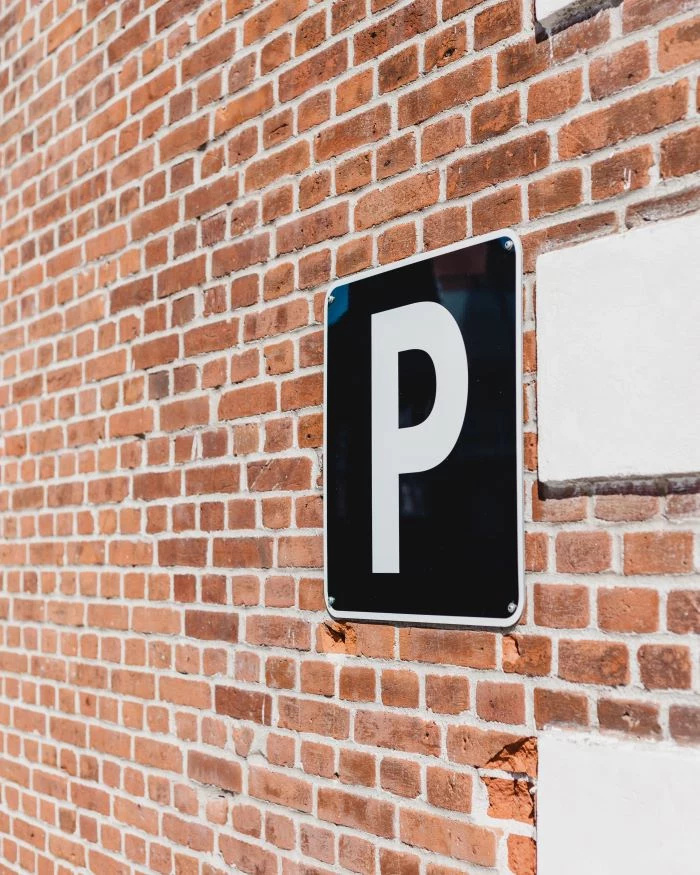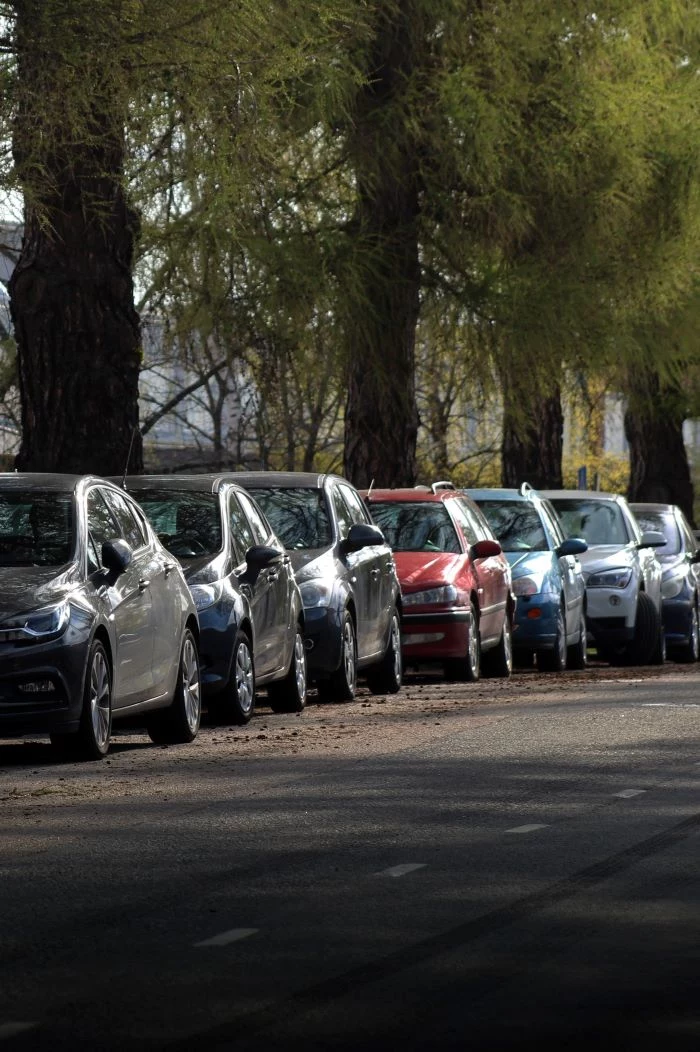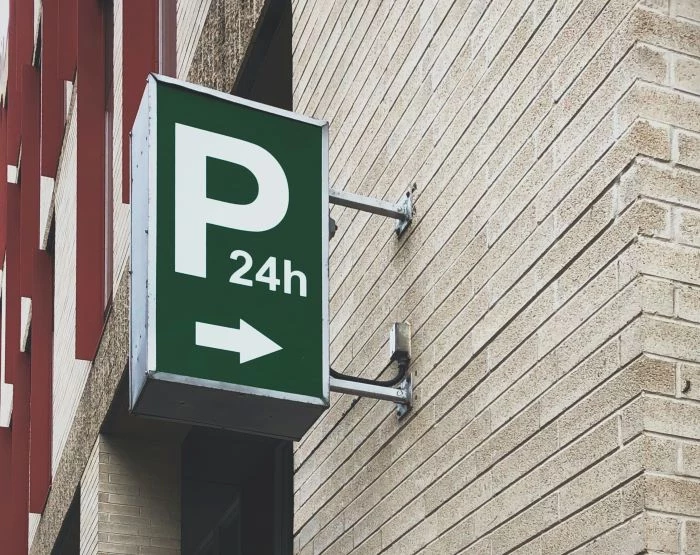My Pro Guide to Finding a Safe Overnight Parking Spot in Any City
I’ve spent a good part of my life managing vehicle logistics—everything from regular sedans to commercial vans loaded with expensive gear. My first real wake-up call about city parking happened in Chicago. I left a brand-new van on what I thought was a perfect street: quiet and brightly lit. The next morning? Smashed window, thousands of dollars in tools gone. That taught me a lesson that sticks with me to this day: a bright light is useless if no one is around to see what it’s shining on.
In this article
- First, Know Your Enemy: The Two Types of Car Thieves
- The Pre-Trip Checklist: Smart Parking Starts at Home
- Breaking Down Your Choices: Garage vs. App vs. Street
- A Closer Look at Your Parking Options
- Extra Protection: Advanced Security Layers
- Finally, Your Personal Safety Is #1
- Your Quick-Reference Parking Checklist
- Inspirational Gallery
Finding a safe place to park overnight in a city isn’t just about dodging thieves. It’s a whole risk-assessment game. You’re thinking about dings and damage, crazy expensive parking tickets, and the risk of getting towed. And honestly, the most important piece is your own safety walking to and from the car. This isn’t about being paranoid; it’s about having a smart, professional method to bring your risk down to almost zero. This is the system I’ve developed and taught to every driver I’ve ever worked with. It’s all about prep, assessment, and action.

This guide will give you that exact checklist—everything from planning before you leave to what to do when you’re on the ground trying to find a spot.
First, Know Your Enemy: The Two Types of Car Thieves
Before you can protect your car, you have to know who you’re up against. In my experience, the threats really boil down to two main types. Figuring out which one you’re trying to stop is the key.
First up is the Opportunist. This is your most common city threat. This person isn’t some criminal mastermind; they’re just looking for a fast, easy score. They walk down the street, casually pulling on door handles. They’re peering into windows, looking for a laptop bag, a phone mount, or even just some loose change. By the way, a visible charging cable screams, “There might be a phone or GPS in the glove box!” They’ll happily smash a window for a potential $50 gain because it takes them less than ten seconds. Their whole game is about speed and convenience. The more annoying you make it for them, the more likely they are to just shrug and move on.

Then you have the Professional. These guys are a different league entirely. They’re not hunting for spare change. They’re targeting specific cars to either strip for high-value parts or steal the whole vehicle. They often have a shopping list—certain catalytic converters are loaded with precious metals, and specific airbags or navigation systems fetch a high price on the black market. These pros come with tools to bypass factory alarms and get in quick and quiet. A locked door doesn’t scare them. What does? Layers of security, things that slow them down, and a high chance of getting caught.
Your job isn’t to make your car an unbreakable fortress. That’s impossible. It’s to make it a less attractive, more difficult target than the cars parked around it. Simple as that.
The Pre-Trip Checklist: Smart Parking Starts at Home
Yep, your parking job starts before you even get in the car. A few minutes of planning can save you a world of hurt. We never left parking up to chance with our fleet; it was a critical part of every single route plan.

1. Scout Your Destination Virtually
Before you head to a new area, do a little homework. Use online maps with street-level views to get a feel for the neighborhood around your hotel or destination. Are the streets and buildings clean, or are they covered in graffiti and trash? That can be a red flag for higher crime. Are the streets super narrow? That’s just asking for a sideswipe from a passing truck.
I also highly recommend using city crime maps. Most police departments have them online—just Google “[City Name] crime map.” Look for patterns of car break-ins or auto thefts right where you plan to be. This is real data, not just a gut feeling.
2. Call Your Hotel and Ask the Right Questions
If you’re staying at a hotel, call them directly. Do not trust the one-line description on a booking site. I once booked a hotel that advertised “free parking,” which turned out to be three unsecured spots on a dimly lit backstreet. A quick call saved me from that mess. I use this exact script:

- “Can you tell me about the parking options at your location?”
- “Is the parking lot you own, or is it a third-party garage?”
- “Is it a surface lot or a covered/underground garage?”
- “Is the entrance gated or controlled?”
- “Is there an attendant on duty 24/7?” (This is a big one!)
- “Is the area monitored by security cameras? Are they actively watched?”
The answers tell you everything. A gated, underground garage with a 24/7 attendant is a world away from an open lot behind the building.
3. Prep Your Vehicle: Make It Look Boring
The goal is to make your car look as uninteresting as possible. I call this making it “sterile.” Remove every single thing of value. Obvious stuff like bags and electronics, of course, but also the things people forget. Take down your phone holder, unplug charging cables, and get rid of that GPS mount. A suction cup mark on the windshield is a dead giveaway that a GPS might be stashed in the glove box. A clean car also helps—it suggests an owner who pays attention and would notice something amiss right away.

Heads Up! What If Your Car IS the Cargo?
Okay, so what if you’re moving cross-country or you’re a sales rep with a car full of samples? You can’t exactly make it sterile. This is a tough spot, but you have options:
- Obscure the View: If you have an SUV or van, get a heavy-duty, dark-colored cargo cover or even just a thick blanket to throw over everything. The goal is to make it impossible to see what’s inside. For vans, you can even use black foam board cut to fit the rear windows.
- Park Strategically: This is huge. Always try to back your vehicle up against a solid wall or another car. This makes it physically impossible to open the rear hatch or van doors. It’s a simple move that completely foils many thieves.
- Add Interior Locks: For commercial vans, you can get heavy-duty interior deadbolts (puck locks) that are a nightmare for thieves to deal with.
- Prioritize Tier 1 Parking: If your car is full of your worldly possessions, this is not the time to save a few bucks. Pay the premium for the most secure, attended garage you can find. It’s cheaper than replacing everything you own.
Breaking Down Your Choices: Garage vs. App vs. Street
When you get to your destination, you have to weigh your options. Here’s how I think about them in terms of cost, security, and convenience.
- Secure Attended Garages (Tier 1): This is the gold standard. It’s the most secure but also the most expensive. Expect to pay anywhere from $40 to $75 per night in a major downtown area. You get 24/7 staff, controlled access, and great lighting. You’re basically paying for peace of mind.
- Peer-to-Peer Parking Apps (Tier 2): Think of apps like SpotHero or ParkWhiz. These can be a fantastic middle ground. You rent a private spot from a resident or business. It’s often cheaper (maybe $25 to $50 a night) and can be very secure, like in a private residential condo garage. The catch? You have to do your own vetting by reading reviews and checking out the photos carefully.
- Street Parking (Tier 3): This is the highest risk but, of course, it’s often free or the cheapest option. It requires the most skill and awareness. The convenience is you park right where you want to be, but the security is left entirely up to chance and your own smart decisions.
A Closer Look at Your Parking Options
Tier 1: The Gold Standard – Secure Attended Garages
This is my non-negotiable choice for any high-value vehicle. A truly secure garage has manned access control (a person in a booth), requires a ticket to get in and out, is brightly lit everywhere (no spooky corners), and has well-maintained cameras. It should also be clean and well-kept. This level of security costs more, but it’s a form of insurance. That colleague who saved $40 parking on the street and came back to a $500 smashed window? He learned that lesson the hard way.
Tier 2: A Good Compromise – App-Based Parking Spots
These services are great, but you have to be your own security auditor. Read every review, especially comments on safety and access. Scrutinize the photos—is it a well-lit spot in a locked garage or a sketchy patch of dirt behind a building? Don’t be afraid to message the owner and ask questions. And trust your gut. If a price seems way too good for the location, there’s probably a reason.
Tier 3: The Calculated Gamble – Street Parking
Sometimes, the street is your only choice. If you have to do it, follow this hierarchy religiously:
- Read the Signs. Then Read Them Again. Seriously. A parking ticket is a more likely enemy than a thief. Street cleaning times, residential permits, weird hourly rules… it’s a minefield. Take a picture of the signs with your phone. Quick tip: In a place like Los Angeles, curb colors are law. Red means no stopping, white is for passenger loading, and green is for short-term parking. Knowing that can save you a $90+ ticket.
- Pick Your Location Wisely. A super busy street has lots of eyes on it, which is good, but also a higher risk of dings. A totally dead side street is quiet… maybe too quiet. The sweet spot is usually a well-lit residential street with some life to it, like one near an apartment building with a doorman or a 24-hour business.
- Use the Light. Don’t just park under a streetlight; park where the light actively hits the doors and windows of your car. Thieves hate working in a spotlight.
- Blend In. Try not to be the fanciest car on the block. Parking a brand-new BMW on a street full of rusty ten-year-old sedans paints a giant target on your back. You want to be just another car in the herd.
Extra Protection: Advanced Security Layers
If you regularly park in risky areas, it’s smart to add more layers of security. Factory alarms are okay, but pros can bypass them in seconds.
- Physical Deterrents: A steering wheel lock (like The Club) is mostly a visual deterrent. It tells the opportunist, “This car is annoying, try the next one.” They cost about $25 to $60 and are worth it for that reason alone. Pedal jacks that lock your brake are even better because they’re harder to get off.
- Electronic Deterrents: A professionally installed aftermarket alarm with a pager that alerts your key fob is a big step up. For real recovery potential, a hardwired GPS tracker is the answer. A pro can hide it so a thief will never find it. The ultimate move? A hidden kill switch. It’s a secret switch that cuts power to the fuel pump or ignition. If the thief doesn’t know where it is, the car simply won’t start. A professionally installed kill switch might run you $150 to $300, but it’s one of the best defenses out there. Always get these installed by a certified auto electronics specialist.
A Quick Note on Rental Cars: Traveling often means you’re in a rental. Check the rental agreement about break-ins, but don’t count on it for much. You can absolutely use a steering wheel lock on a rental car—I do it all the time. It’s a cheap, portable piece of security that travels with you.
Finally, Your Personal Safety Is #1
All this talk about cars is pointless if you don’t keep yourself safe. The walk to and from your car is a moment of high vulnerability.
- Plan Your Walk: When you park, scope out the path you’ll have to walk later. Is it well-lit? Too many hiding spots? If it feels sketchy, move the car.
- Keys in Hand: Have your keys out and ready before you even leave the building. Fumbling for them at your car door makes you a sitting duck.
- Be Aware: Put the phone away. Take off the headphones. Keep your head up and scan your surroundings. It signals you’re not an easy target.
- Trust Your Gut: This is the most important rule. If a situation feels wrong, it is wrong. Walk back to a busy place and call for a ride. Your safety is worth more than any inconvenience. Never, ever be afraid to look silly or overcautious.
Your Quick-Reference Parking Checklist
Okay, let’s boil it all down. Here’s what to remember.
Pre-Parking Checklist:
- Research the area with online maps and city crime maps.
- Call the hotel to confirm parking security specifics.
- Make your car “sterile”—remove all valuables and signs of valuables.
- If your car is full, plan to park with the rear doors against a wall.
Street Spotting Checklist:
- Read all parking signs carefully and take a photo.
- Choose a well-lit spot on a street with some foot traffic.
- Make sure the light illuminates your doors, not just your roof.
- Try to “blend in” with the other cars on the street.
- Always trust your gut. If it feels wrong, find another spot.
In the end, you can never get rid of all risk. But you’re not trying to. You’re just trying to make your car a harder, riskier target than the one next to it. By using this method, you dramatically swing the odds in your favor, ensuring that your property—and more importantly, you—stay safe.
Inspirational Gallery
Paid Secure Garage: High upfront cost (often $40+ per night), but offers surveillance, attendants, and protection from the elements. The best choice for high-value vehicles or when personal safety walking to/from the car is the absolute top priority.
Well-Researched Street Spot: Free, but it’s a calculated risk that requires homework. You’re relying on natural surveillance from foot traffic, good lighting, and avoiding local pitfalls like street cleaning signs. Ideal for the budget-conscious who have done their reconnaissance.
According to the National Insurance Crime Bureau (NICB), a vehicle is stolen approximately every 39 seconds in the United States.
This isn’t just a statistic; it’s a constant reminder that car theft is a high-frequency crime. Most of these are not master heists but crimes of pure opportunity. Your goal isn’t to make your car impenetrable—it’s to make it a more difficult and time-consuming target than the car next to it. Time is the one thing a thief never has enough of.
- A robust steering wheel lock, like the classic bright yellow
But isn’t my car’s factory alarm enough to scare thieves away?
For an amateur, perhaps. For a practiced thief, a factory car alarm is a minor, predictable nuisance. They know how to disable them in seconds—often by breaking a window and quickly disconnecting the battery or pulling a specific fuse under the hood. Never rely solely on a blaring horn; physical deterrents that cost the thief time are far more effective.
The single most powerful anti-theft strategy: Make your vehicle look completely, utterly, and boringly empty. This goes beyond
- Avoids the pre-dawn panic of a street-sweeping ticket.
- Guarantees you’re not unknowingly blocking a hidden driveway.
- Lets you see the actual ‘vibe’ and lighting of the street before you arrive.
The secret? Use Google Maps’ Street View function. Before you even leave home, you can digitally
Once you’ve done all the logical checks, take a moment and trust your gut. If a street feels wrong, it probably is. Is it too quiet? Is there fresh broken glass on the sidewalk from a previous break-in? Does the walk from the spot to your destination feel exposed or unsafe? If you feel that knot in your stomach, don’t ignore it. Find another spot. That instinct is your most primitive and powerful security system.
Finding parking is only half the battle. Use a dedicated app to find and pre-pay for a spot in a reputable garage. This eliminates the stress of circling the block in an unfamiliar area.
- SpotHero: Allows you to compare prices and locations, often providing significant discounts over the drive-up rate.
- ParkWhiz: Another excellent option for booking spots in major cities across North America, from hourly to monthly.
Booking ahead means you have a guaranteed, vetted destination, which is invaluable for late-night arrivals.










